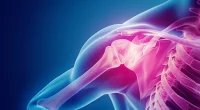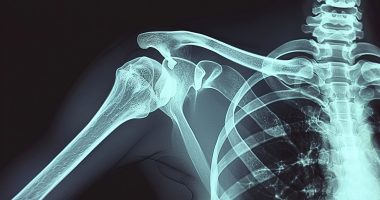Meniscus tear
What’s that?
A meniscus tear is a mechanical injury to the cartilage tissue located between the tibia and femur bones, the connection of which forms the knee joint.
About the disease
The meniscus is a cartilaginous structure with three segments. In the center is the body, and at the edges are the anterior and posterior horns fixed to the elevation between the condyles. The cartilaginous interarticular layer of the knee consists of 2 menisci – one located closer to the outer edge and the other closer to the inner edge. From the front, the two menisci are connected by a transverse ligament. The menisci help improve the knee joint’s functional status by easing the load of movement and providing the best possible glide.
Different areas of the meniscus have different blood supply, which determines the nature of healing of the injury. The best blood flow is noted in the red zone, which is located close to the joint capsule connecting with it. Injuries in the red zone heal, as a rule, independently. In the central part of the joint, the menisci have an extremely poor blood supply – this is the white zone, tears of which are usually an indication for surgical intervention. There is an intermediate zone between the central and peripheral parts. There are no vessels inside the meniscus; they receive nutrition by diffusion from nearby structures.
Sports activities are linked with an increased risk of injury. Internal injuries of the knee joint, such as traumatic meniscus and anterior cruciate ligament tears and their combination, represent one of the most difficult challenges in the treatment and diagnostic process. Meniscal injuries are commonly seen in sports but can also occur at home. The inner meniscus is more susceptible to injury compared to the outer (lateral) meniscus.
Meniscal damage is manifested by intense pain localized in the knee area; the function of this joint is impaired. The joint becomes swollen, and spilled blood accumulates inside it. If medical care is not provided in the acute injury, then a chronic degenerative lesion of the meniscus develops. This condition is characterized by moderately severe pain, periodic fluid accumulation in the joint cavity, and recurrent joint blockages (“jamming”).
In case of minor injuries, conservative therapy is performed. It includes the use of anti-inflammatory drugs and puncture of the joint to sanitize it from the spilled blood. In the acute period, functional rest is indicated. In complex treatment, physiotherapeutic procedures and physical therapy are used. If conservative therapy is unsuccessful, or the damage is too significant, surgical intervention is performed, which is performed arthroscopically.
Types
According to the classification, the following types of ruptures are distinguished:
- partial and complete damage to the cartilage layer;
- isolated injury, where either the lateral or medial meniscus is injured, and combined injury, where two menisci are injured at once.
By type of injury, meniscus tears are as follows:
- by type of flap;
- horizontally oriented;
- radial-transversal;
- structural abnormalities of the posterior horn of the medial meniscus or lateral meniscus;
- damage to the anterior horn of the medial/lateral meniscus;
The Stoller classification suggests 3 degrees of severity:
- in the first degree, there is localized minor damage to the meniscus;
- in the second degree, the damage extends beyond the meniscus;
- in the third degree, the damage involves the entire cartilage.
Symptoms of a meniscus tear
Acute meniscus tear is accompanied by an inflammatory reaction not associated with the penetration of microorganisms. The patient is bothered by intense pain in the knee area. The function of the articulation is violated, especially associated with extensor movements. The joint swells and the skin above it remains unchanged. With severe degrees of damage, it is difficult for a person to move, and sometimes even impossible. Symptoms of a meniscus tear are significant if the damage is complete. With incomplete injuries, clinical manifestations soon quickly pass, but without proper assistance, the cartilage plate of the joint cannot fully recover. If treatment begins promptly, the symptomatology passes in a few weeks, and the person returns to his usual way of life.
Pain and swelling are somewhat reduced in the subacute stage, which develops 15-20 days after injury. However, signs of jamming appear. In passive movements, clicking is detected. Joint blockade can persist not only in the subacute but also in the delayed period.
In case of significant meniscus tears, the vessels of the knee joint are damaged, which leads to the outpouring of blood into its cavity. Hemarthrosis is accompanied by smoothing of the articulation contours and requires minimally invasive intervention to evacuate blood fluid, lavage, and antiseptic treatment.
In the case of old injuries, the symptomatology has a wavy course. Clinical manifestations appear and disappear. The main symptom is moderately significant pain. With exacerbation of the pathological process, synovitis – inflammatory lesions of the synovial membrane lining the joint from the inside – often develop. In the elderly, chronic post-traumatic ruptures may be asymptomatic, significantly increasing the risk of deforming osteoarthritis.
Reasons
Risk factors in which meniscus injury occurs can be:
- a sharp inward or outward turn of the tibia;
- hyperextension that exceeds the allowable amplitude in the joint;
- excessive tibial extension or adduction;
- a direct hit to the knee.
There is a high incidence of meniscus injuries among athletes in various playing sports, especially soccer, basketball, and wrestling.
Sports injuries can be related to the following factors:
- mistakes when performing exercises;
- poorly equipped gyms;
- bad weather conditions – relevant if classes are held outdoors;
- failure to follow the doctor’s recommendations;
- low level of discipline among athletes.
Diagnosis
Diagnosis of the pathological process is based on the data of objective examination, which is supplemented by additional diagnostics. The main methods of visualization are the following:
- X-ray scans can exclude damage to bony structures, but it is not possible to assess the condition of the menisci with X-rays;
- ultrasound scanning – the method helps to examine the soft tissue formations of the joint;
- magnetic resonance imaging (MRI) – provides an opportunity to assess in detail the condition of intra- and extra-articular structures that are not available for X-ray examination;
- diagnostic arthroscopy – endoscopic instruments with a camera at the end are inserted into the joint cavity; the enlarged image is displayed on the screen (arthroscopy allows you to assess the condition of the joint from the inside).
Meniscus tear treatment
The most common method of treatment for meniscus tears is surgical, with the vast majority of surgery performed arthroscopically.
Conservative treatment
Conservative treatment is performed for incomplete tears localized closer to the joint capsule. It consists of functional rest of the injured leg, physiotherapy, and non-steroidal anti-inflammatory drugs.
Recently, growth factors and platelet-rich autoplasma have been used in traumatology. These substances are activators of trigger receptors of individual target cells; in the latter, under the action of growth factors, a cascade of reactions is triggered, leading to the activation of genes that affect proliferation, differentiation, and cell death.
Surgical treatment
A combination of factors is an absolute indication for organ-preserving surgery for fresh traumatic meniscus tears of the knee joint:
- complete vertical longitudinal tear with a length of more than 10 mm;
- located no further than 4 mm from the capsule;
- with signs of instability and displacement to the center of the joint during the diagnostic test;
- with the absence of secondary degenerative changes and deformation of the central part of the rupture;
- with no arthroscopic evidence of articular cartilage damage above grade 2 according to the Outerbridge classification;
- stable knee joint;
- an active lifestyle.
Several methods are known to restore the anatomical integrity of the menisci of the knee joint:
- open meniscus suture;
- arthroscopic suture of the meniscus using the inside-out, outside-in, all-inside technique;
- hybrid techniques.
All these treatment options are available in more than 920 hospitals worldwide (https://doctor.global/results/diseases/meniscus-tear). For example, Arthroscopic meniscus repair is done in 26 clinics across Turkey for an approximate price of $4.5 K (https://doctor.global/results/asia/turkey/all-cities/all-specializations/procedures/arthroscopic-meniscus-repair).
Prevention
Prevention is aimed at preventing household and sports injuries. For this purpose, observing safety measures and using protective equipment is recommended.
Rehabilitation
After the completion of the main course, the active period of rehabilitation begins, which includes the following areas:
- physiotherapy – electrophoresis, ultrasound therapy, laser therapy;
- performing physical exercises – a course of exercises for muscle recovery and joint development;
- taping – helps stabilize the function of the knee joint;
- course of massage to help activate muscles and develop the tendon and ligament compartment.





